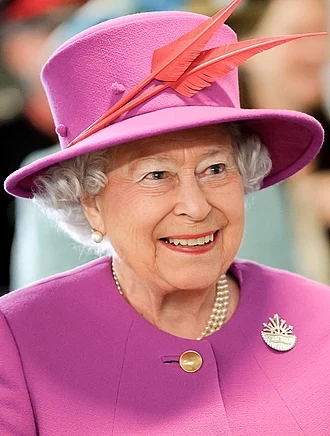Queen Elizabeth II

Queen of the United Kingdom from February 1952 until September 2022
Our family were deeply upset on hearing the sad news that our Queen had passed away on Thursday the 8th of September 2022. The end of an era. She was an inspiration to the world. We send our condolences to the Royal Family as we welcome the Queens Heir, Charles 111. Long Live The King.
The following article and information is taken from: Wikipedia, the free encyclopaedia
Queen Elizabeth II
Elizabeth II was Queen of the United Kingdom from 6 February 1952 until her death on 8 September 2022. Her reign of 70 years and 214 days was the longest of any British monarch and the second-longest recorded of any monarch of a sovereign country.
Born: 21 April 1926, Bruton Street, London
Died: 8 September 2022, Balmoral Castle
Full name: Elizabeth Alexandra Mary Windsor
Spouse: Prince Philip, Duke of Edinburgh (m. 1947–2021)
Children: King Charles III, Prince Andrew, Duke of York, Anne, Princess Royal, Prince Edward, Earl of Wessex
Elizabeth II (Elizabeth Alexandra Mary; 21 April 1926 – 8 September 2022) was Queen of the United Kingdom and other Commonwealth realms from 6 February 1952 until her death in 2022. She was queen regnant of 32 sovereign states during her life and served as monarch of 14 of them at the time of her death. Her reign of 70 years and 214 days is the longest of any British monarch and the longest recorded of any female head of state in history.
Elizabeth was born in Mayfair, London, as the first child of the Duke and Duchess of York (later King George VI and Queen Elizabeth). Her father acceded to the throne in 1936 upon the abdication of his brother, King Edward VIII, making Elizabeth the heir presumptive. She was educated privately at home and began to undertake public duties during the Second World War, serving in the Auxiliary Territorial Service. In November 1947, she married Philip Mountbatten, a former prince of Greece and Denmark, and their marriage lasted 73 years until his death in April 2021. They had four children: Charles, Anne, Andrew, and Edward.
When her father died in February 1952, Elizabeth—then 25 years old—became queen of seven independent Commonwealth countries: the United Kingdom, Canada, Australia, New Zealand, South Africa, Pakistan, and Ceylon (known today as Sri Lanka), as well as Head of the Commonwealth. Elizabeth reigned as a constitutional monarch through major political changes such as the Troubles in Northern Ireland, devolution in the United Kingdom, the decolonisation of Africa, and the United Kingdom's accession to the European Communities and withdrawal from the European Union. The number of her realms varied over time as territories gained independence and some realms became republics. Her many historic visits and meetings include state visits to China in 1986, Russia in 1994, and the Republic of Ireland in 2011, and meetings with five popes.
Significant events include Elizabeth's coronation in 1953 and the celebrations of her Silver, Golden, Diamond, and Platinum jubilees in 1977, 2002, 2012, and 2022, respectively. Elizabeth was the longest-lived British monarch and the second-longest reigning sovereign in world history, only behind Louis XIV of France. She faced occasional republican sentiment and media criticism of her family, particularly after the breakdowns of her children's marriages, her annus horribilis in 1992, and the death of her former daughter-in-law Diana, Princess of Wales, in 1997. However, support for the monarchy in the United Kingdom remained consistently high, as did her personal popularity. Elizabeth died aged 96 at Balmoral Castle, Aberdeenshire, and was succeeded by her eldest son, Charles III.
